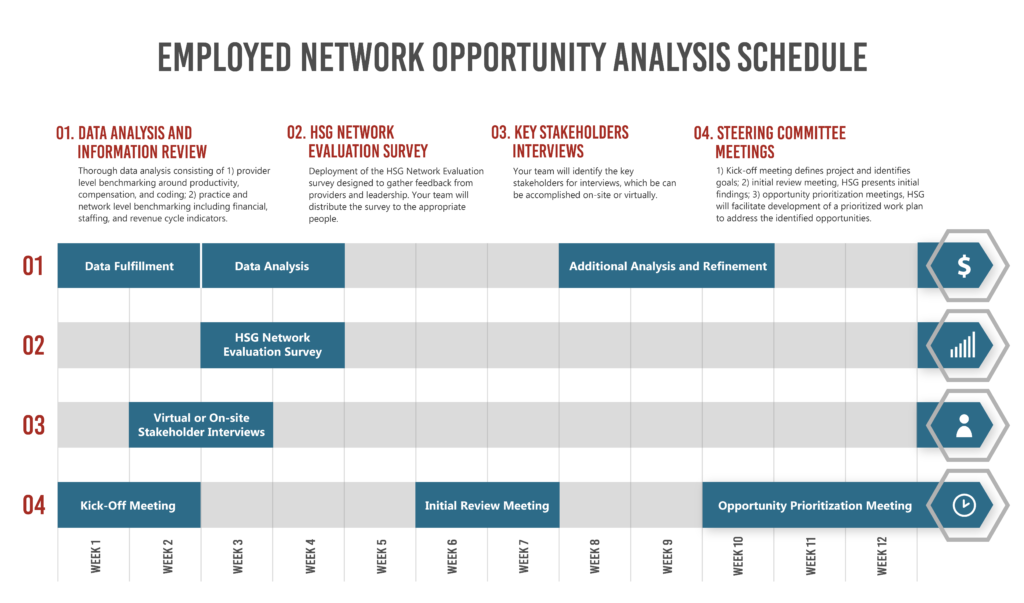HSG Network Opportunity Analysis
Physician Network Optimization is not a straight path. Begin the journey to a better employed provider network with the HSG Network Opportunity Analysis. This 10-12 week process will deliver a tailored workplan designed to identify and address opportunities within your employed provider network.

HSG helps deliver a tailored network opportunity improvement plan by conducting the following:
- Thorough data analysis consisting of:
- Provider level benchmarking around productivity, compensation, and coding;
- Practice and network level benchmarking including financial, staffing, and revenue cycle indicators.
- Deployment of the HSG Network Evaluation Survey designed to gather feedback from providers and leadership.
- Review of relevant information and documents including strategic plans, organizational chart, and leadership council charters.
- Interviews with key stakeholders, which could be accomplished on-site or virtually
- A series of meetings with a steering committee to consist of:
- A kick-off meeting to define project and identify goals
- An initial review meeting where preliminary findings are discussed and vetted
- An opportunity prioritization meeting where HSG will facilitate development of a prioritized work plan to address the identified opportunities
Start your organization on the correct path to physician network optimization by performing an initial 10-12 week comprehensive network opportunity analysis.
Related Content
You can also learn more on how to reduce the losses in your physician network and create financial sustainability below. Common causes of financial stress around a physician network include:
- Underperfoming Revenue Cycle
- Misalignment of compensation and production
- Inconsistent approaches to operations, staffing, and space utilization
- Insufficient utilization of advanced practice provider (APPs)
- Underinvestment in management infrastructure
- Poorly desinged organizational structure
- Strategic issues disguised as performance issues
- Employing “who we have” vs. “who we need”
